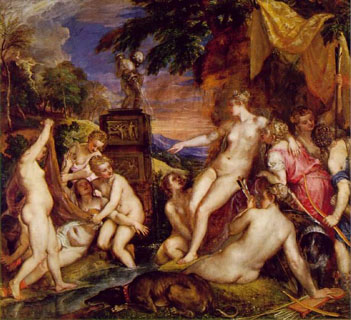“The Age of Titian: Venetian Renaissance Art from Scottish Collections”, which opened at the Royal Scottish Academy last week, is an extraordinary exhibition with an unpromising title. How much great Venetian art of the fifteenth and sixteenth centuries could there possibly be, in a relatively small, northern European country such as Scotland – a country, moreover, where for centuries the prevailing Calvinist religion strenuously discouraged the collection of art from decadent, Popish Italy? The answer, surprisingly, turns out to be an awful lot. The exhibition contains numerous paintings by artists such as Titian, Bellini, Veronese and Tintoretto, as well a host of works by less well known figures like Lorenzo Lotto, Palma Giovane, Paris Bordon and various members of the prolific Bassano family. Consisting of around 250 exhibits in all, it is a stunningly rich display of all the important genres of Venetian art, including religious paintings, mythologies, pastorals, nudes and portraits, as well numerous drawings and a smattering of sculpture and decorative arts besides.
Most of these works were collected during the eighteenth and nineteenth centuries, when a number of the most active dealers in Old Master pictures happened to be Scottish, and when many a Caledonian milord went on the Grand Tour and developed a healthy appetite for art. Some, such as the Duke of Sutherland’s world-famous Titians, long on loan to the National Gallery of Scotland, are already familiar. But many others, borrowed from smaller museums and some of the less well frequented ancestral homes of the Scottish aristocracy, are all but unknown to the general public. This is not just an outstanding exhibition of Venetian Renaissance art but also a show full of fascinating new discoveries.
It opens with a tightly hung gallery of works exemplifying the rapid evolution of Renaissance styles of painting in Venice,...

“The Age of Titian”, at the Royal Scottish Academy, Edinburgh
08-08-2004

